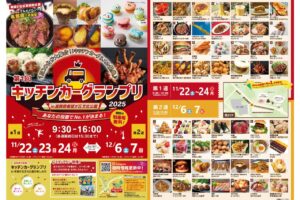
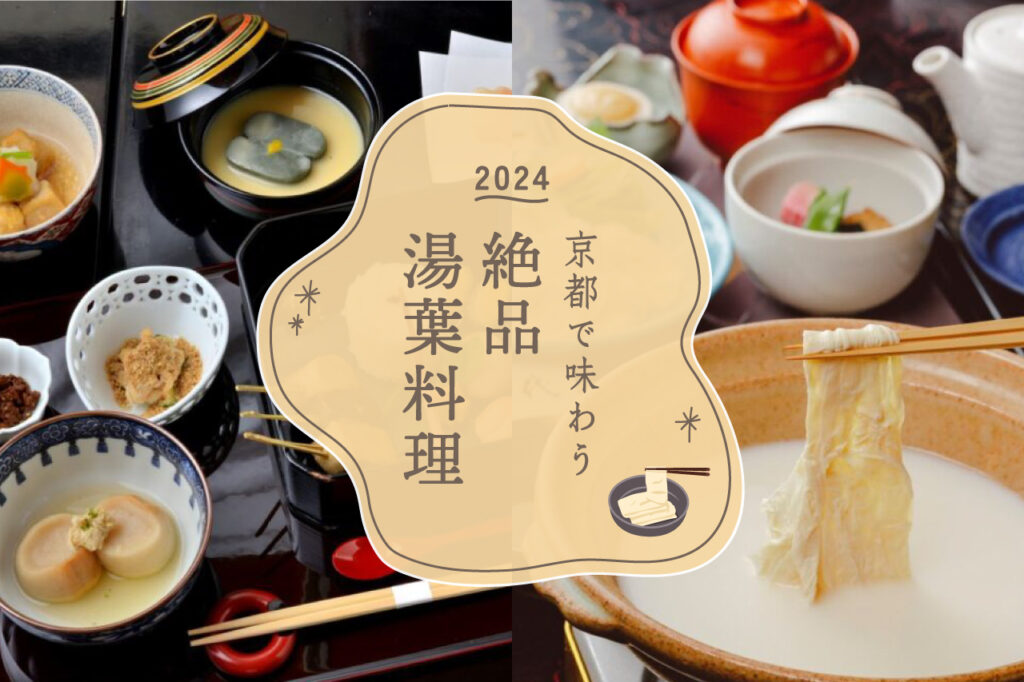

If you want to experience Kyoto's food culture, how about trying yuba cuisine, a dish that lets you feel the emotion of Kyoto? We pick up restaurants that you should know if you like yuba, such as long-established restaurants where you can taste yuba made with traditional techniques inherited from the ancient times, and Japanese restaurants where you can enjoy creative dishes using yuba. The elegant presentation of the dishes is also a must-see for those who love yuba. (TEXT/Meimi Toyoda, EDIT/Miki Tamura)
At Mita Hisashi Shimizu Branch, located at the foot of Kiyomizu-zaka, you can enjoy the taste of yuba that has been handed down for over 100 years since its establishment. The lunchtime-only Kyo-yuba Wagyu Gozen, which allows you to compare five different types of yuba, is recommended for those who want to enjoy yuba to the fullest. The Mita Hisa style is to use only the finest soybeans and the cleanest underground water in Kyoto, and the production process is so simple that it is made with the utmost care.
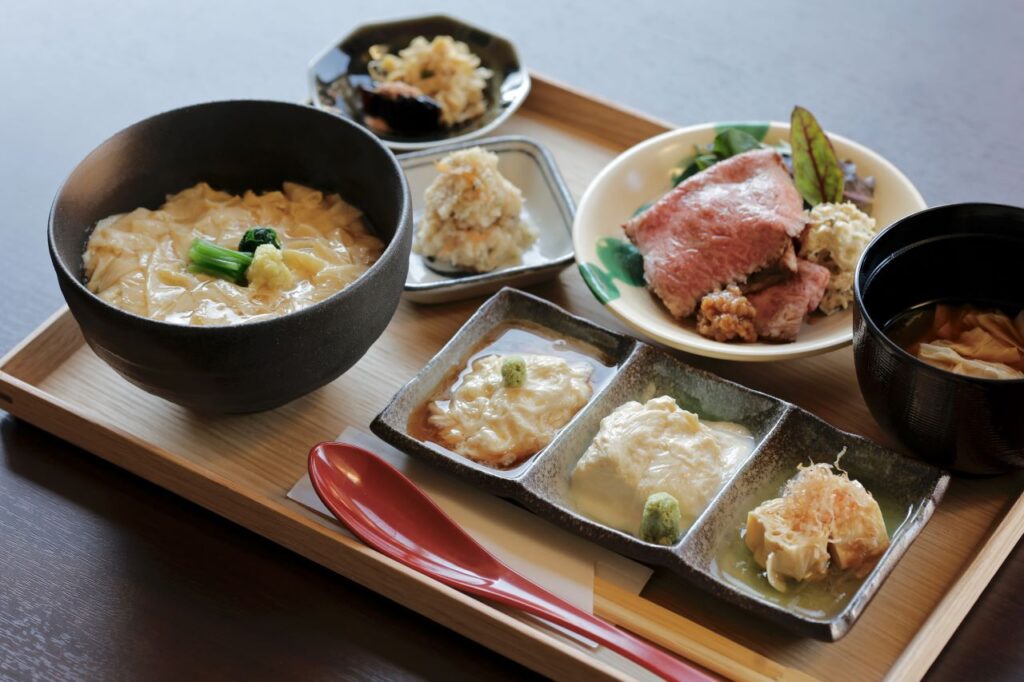
Kyo-yuba Wagyu Gozen for 3,480 yen. The three types of yuba are kujo, kokkomi, and komaki. Rice can be changed to a bowl of yuba for +500 yen.

At Mameya Genzo, which has been inherited from the teahouse Ryoso [Omihatsu] and makes use of the atmosphere of a Kyoto townhouse, you can enjoy yuba while watching the murmuring of the Kamo River. During the hot season, the restaurant offers Kyoto-style kaiseki cuisine using homemade pumped yuba and seasonal ingredients on the Noryo-doko, a traditional summer floor in Kyoto. The atmospheric building, which retains a sense of time, and the richly flavored yuba and tofu dishes blend comfortably with each other. We hope you will experience summer in Kyoto in this atmospheric space that is a little removed from everyday life.
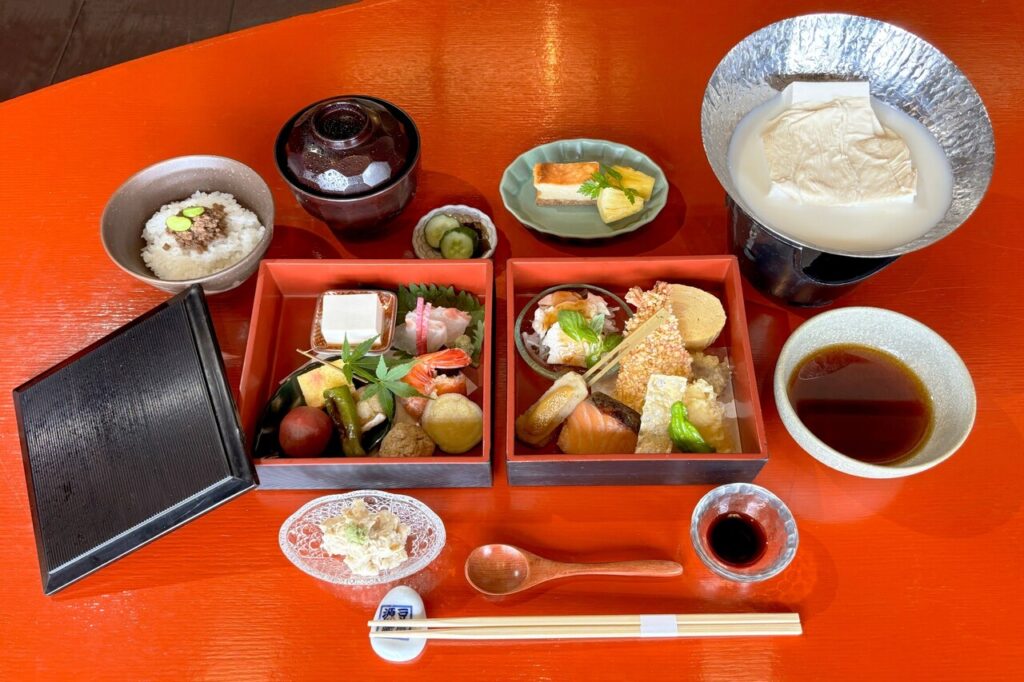
Tofu Gozen (set meal): 4,400 yen. The main ingredients, yuba (bean curd) and tofu, are homemade, and you can taste the deep richness of the beans. Enjoy it with a special dipping sauce.

[On the approach to Kiyomizu-Dera Temple is Kiyomizu Gojozaka Yuba Izumi, a restaurant specializing in yuba cuisine owned by Kyoto Restaurant Isobe. The yuba is carefully scooped up one by one in a workshop on the second floor of the restaurant, and its smooth and creamy texture is very appealing. The signature menu, Kyo-yuba-zen, includes three kinds of kumiage-yuba, yuba rice, and deep-fried wrapped yuba, and is a complete yuba meal. Enjoy the yuba dishes to your heart's content, which are made from the best knowledge of yuba and make full use of its deliciousness.
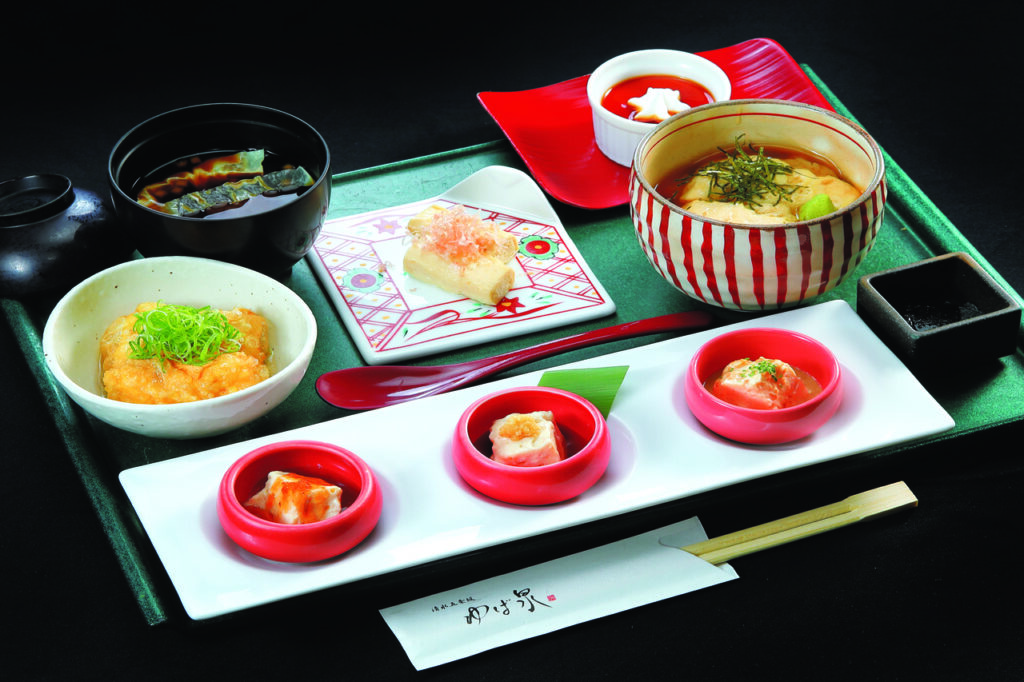
Kyo-yuba set (2,420 yen). The menu features ingredients unique to Kyoto, such as rice grown in Kyoto Prefecture.

Yubanzai Komamiya Nishiki Branch, located in Nishiki Market, the kitchen of Kyoto, offers a variety of creative dishes using yuba, such as yuba spring rolls and yuba tempura. The restaurant's attention to ingredients is not limited to yuba, but also includes Kyoto vegetables, Kyoto pickles, and other ingredients that can be enjoyed in harmony with Kyoto's unique ingredients. All seats are furnished with sunken kotatsu-style tables made of warm solid wood, which give the restaurant a special presence. A variety of yuba dishes served while relaxing with your legs stretched out will gently heal your body after a hard day's walk.
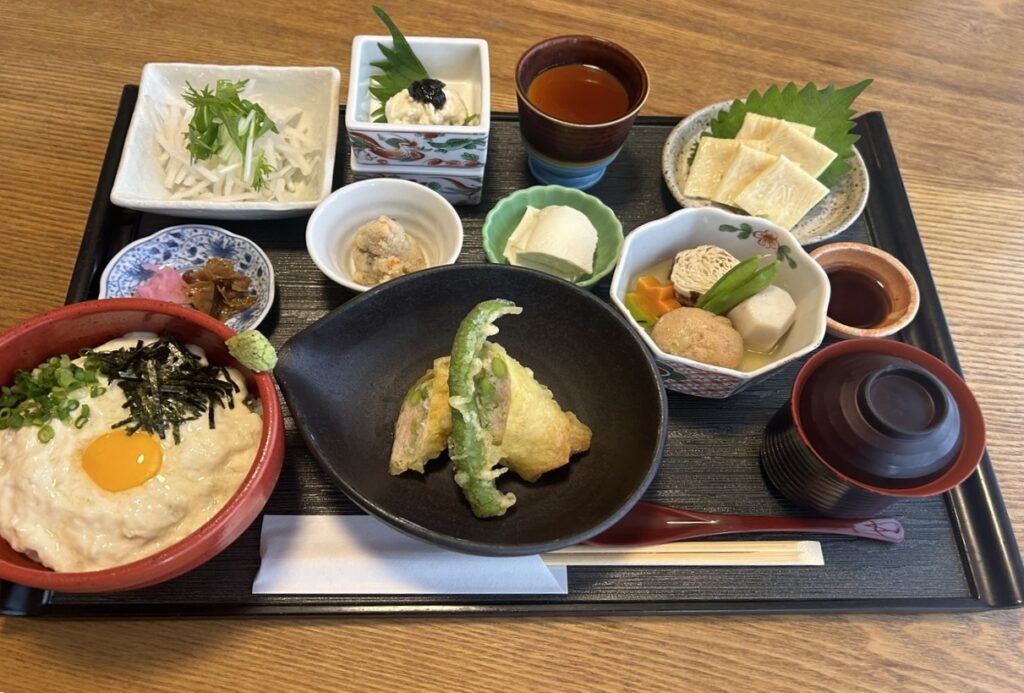
Yuba Gozen (yuba noodle set) 2,900 yen. Yuba, okara (bean curd), and soy milk are used in all dishes. The soy milk pudding, with its gentle sweetness, is a must-try after dinner!

The restaurant is directly owned and operated by Kyoto Miyama Yuba Yumame, and its chef has a deep knowledge of Japanese cuisine. [Yuba Cuisine Higashiyama Yumame was established as a restaurant under the direct management of Kyoto Miyama Yuba Yumame, featuring yuba dishes prepared by a chef with a deep knowledge of Japanese cuisine and a background in Italian cuisine. The lunch menu, "Umi-no-zen," features a wonderful fusion of seafood and yuba. The sesame-based Rikyu ankake (sauce with sesame seeds) brings out the natural flavor of the yuba to the fullest, making it an impressive dish.
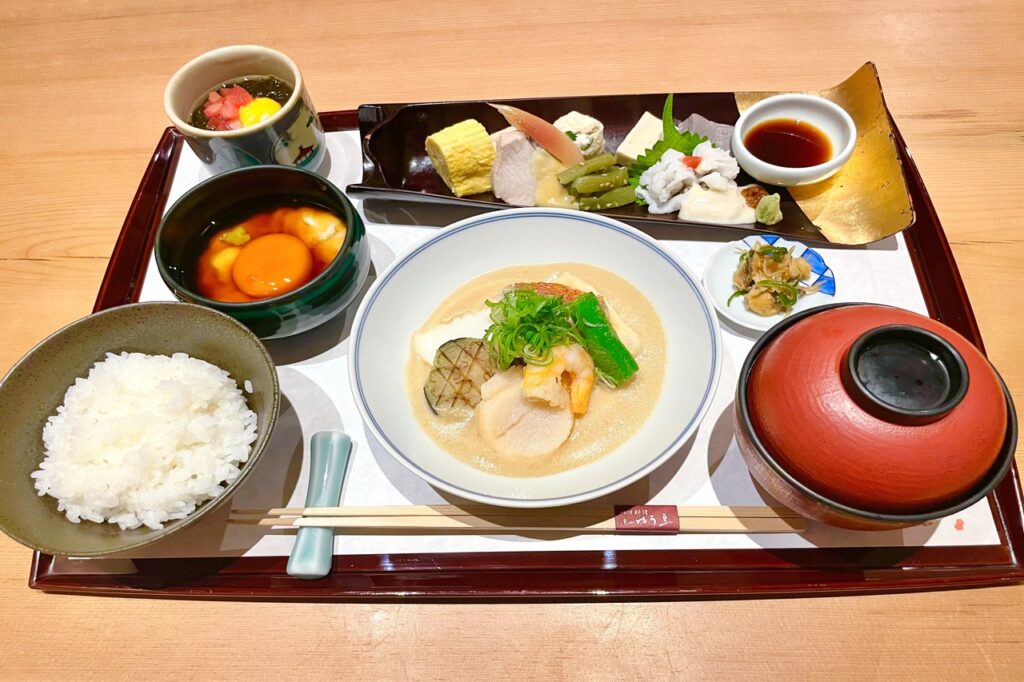
Umi no zen: 3,600 yen. With Rikyu ankake, named after Sen no Rikyu, who liked to use sesame seeds in his cooking.

[The roots of Ryoteiwa Yachiyo date back to the Azuchi-Momoyama period. The restaurant began as a fish wholesaler that was allowed to enter the Imperial Palace, and after the war, it began operating a ryotei garden at Nanzenji Temple, a place associated with Jihei Ogawa. After the war, he began operating a ryotei garden at Nanzenji Temple, a place associated with Jihei Ogawa. If you look outward, the breathtakingly beautiful scenery will cover your view. The Kyoto yuba shabu shabu set, which uses yuba carefully prepared one by one, is limited to 15 servings a day. Try this rare delicacy.
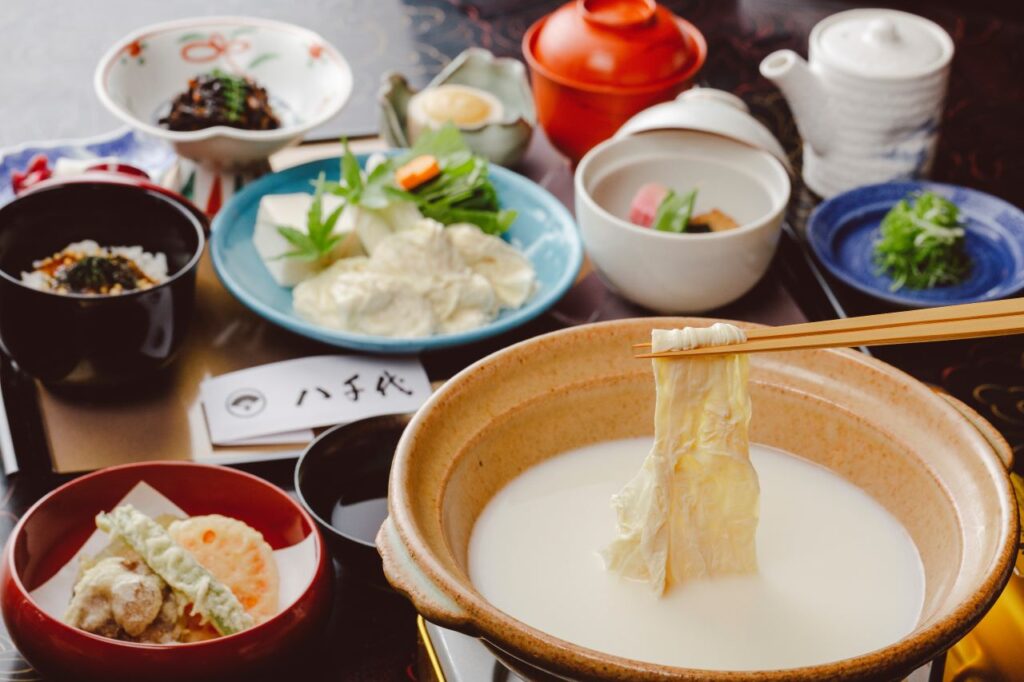
Kyo-yuba shabu-shabu gozen (Kyoto yuba shabu-shabu set): 3,800 yen. In addition to yuba shabu shabu shabu served with soy milk, the menu also includes kumiage yuba donburi, sesame tofu, and kyo yona vegetable tempura. A luxurious meal that allows you to fully enjoy the flavors of Kyoto.

Shizuya started out by offering yuba-domestication meals at its main restaurant in Miyama, hoping to "let people know how to eat yuba. Later, Shizuya opened Kyo Yuba Restaurant Shizuya Nijo Castle Branch in the vicinity of Nijo Castle, a popular sightseeing spot in the city. The restaurant is a cozy space with a counter seating nine in a row. The restaurant offers a variety of yuba dishes in a course format. The seven-course Nijo course, which includes the famous kumikake ichiban yuba and two types of raw yuba sashimi, is a must-try dish for lunch. The yuba is carefully prepared using the limpid water of Miyama, and the sweetness of the domestic soybeans can be directly felt by eliminating any unwanted flavors.
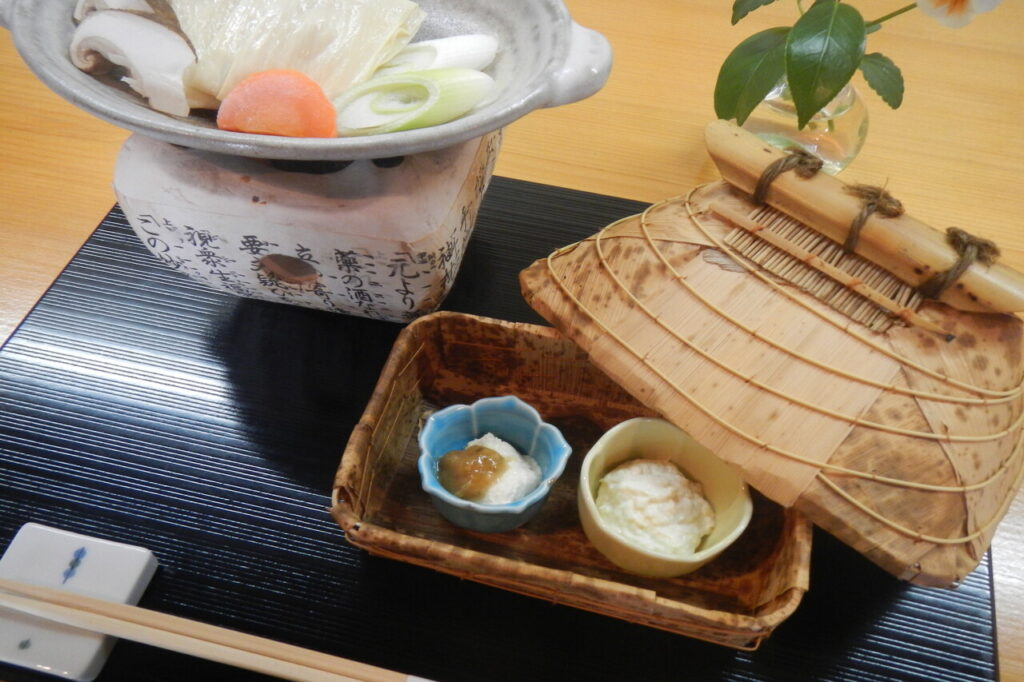
Specialty Yuba Gyozu Zen Nijo, 3,800 yen. The 7-course menu also includes a lineup of yuba soy milk pudding, and it is nice to be able to end the meal with a yuba sweet (photo shown in image).

Founded in 1913, Kyoto Yuba Cuisine Kaméya Honke is a long-established restaurant where the taste has been passed down for four generations. After passing through a long passageway unique to Kyoto machiya houses, called "eel beds," you will find a good old-fashioned space where you can enjoy your meal in a relaxed atmosphere. The popular kaiseki cuisine Yuba Kaiseki Toji offers a succession of dishes that are irresistible to yuba lovers, such as the famous yuba hot pot, fresh yuba sashimi, and yuba spring rolls. They will be reminded of the many ways to enjoy yuba. In addition to our signature yuba dishes, we are also pleased to offer seasonal seafood such as pike conger eel and puffer fish, etc. Our private rooms can accommodate 4 to 30 people, making them ideal for celebratory gatherings. Lunch hours are irregular, so be sure to confirm by 8:00 p.m. the day before.

Yuba Kaiseki Toji: 5,500 yen. In addition to the famous yuba hot pot, a variety of creative dishes using yuba will be served.

[For more than 50 years, this restaurant has been located in Maruyama Park, right next to the Ryoma statue. While carefully preserving the traditions of Kyoto cuisine, this restaurant continues to offer new dishes in step with the times, never forgetting its spirit of exploration. The Kyo Yuba Zukushi, which is popular for its abundant yuba flavor, allows you to enjoy fresh Kyo yuba carefully prepared in the yuba kitchen located inside the restaurant to your heart's content. The yuba is made from the finest Japanese soybeans and has a creamy texture that will make your mouth water. Enjoy the gently seasoned yuba dishes that will soothe your body and soul.

Kyo yuba zukushi for 3,300 yen. A variety of elaborate yuba dishes are lined up in a lineup of 8 dishes. Tempura and sashimi can be added for an additional charge, so you can have this and that in addition to yuba! can also be added for an additional charge to satisfy your cravings!

Tofu cuisine and original dishes using yuba (bean curd) can be enjoyed at Tofu Cuisine and Obanzai Kyoto Mamehachi Honten in Ponto-cho, where many delicious restaurants line the streets. The Mamehachi Baskets, which are popular during lunch time, are beautifully arranged with a wide variety of dishes such as kumiage yuba and Mineoka tofu, and are filled with "Delicious! The restaurant's interior is flexible enough to meet a variety of needs. The restaurant offers counter seats and private rooms to flexibly accommodate various needs. Enjoy the luxury of yuba alone, or stop by casually with friends. Spend a moment facing a variety of dishes that are beautiful to the eyes.
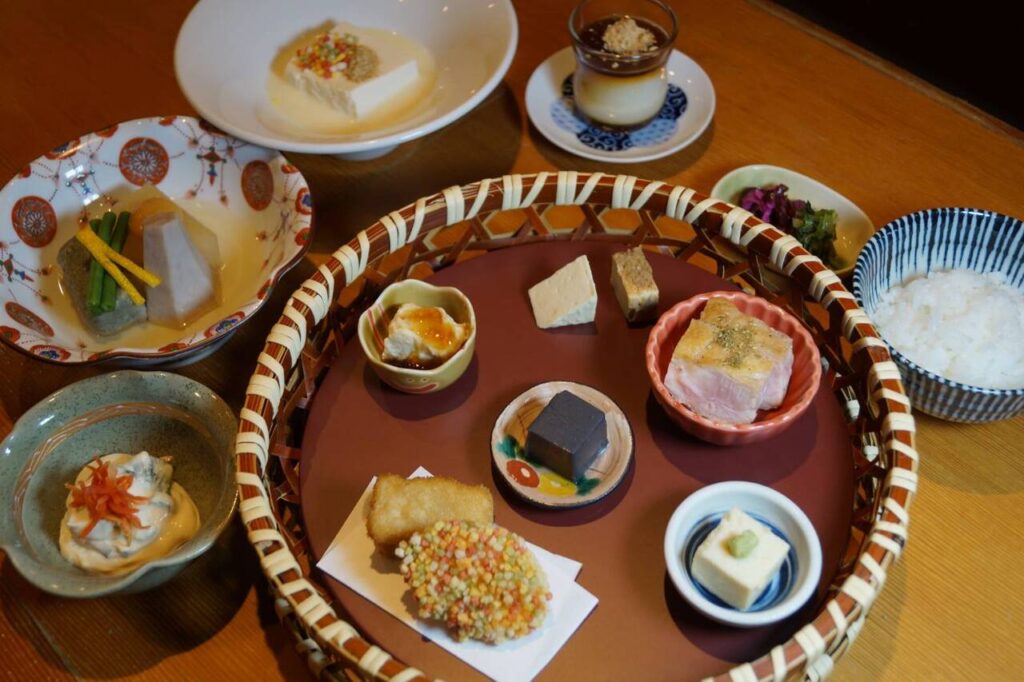
Mamehachi basket of 3,300 yen. Inside the basket is a lineup of seven items, all arranged in a refined, Kyoto-like manner. Please note that this is a lunch-only menu.

Designated as a registered tangible cultural property, Jyunseishoin is a historic building that was originally built as a medical school during the Edo period. It is now used as a dining hall, and is surrounded by a 1,200-tsubo garden with a circular path around it. The garden is surrounded by a 1,200-square-meter circular garden with a beautiful view of the changing seasons and the murmuring of the river, making it an appealing place to enjoy a meal. Yuba (yuba leaves), which can be selected as the main dish of the "Hana" course, is served in a pot and is drawn from the pot by the guests themselves. Enjoy the taste of freshly made yuba in a space that evokes the atmosphere of Kyoto.
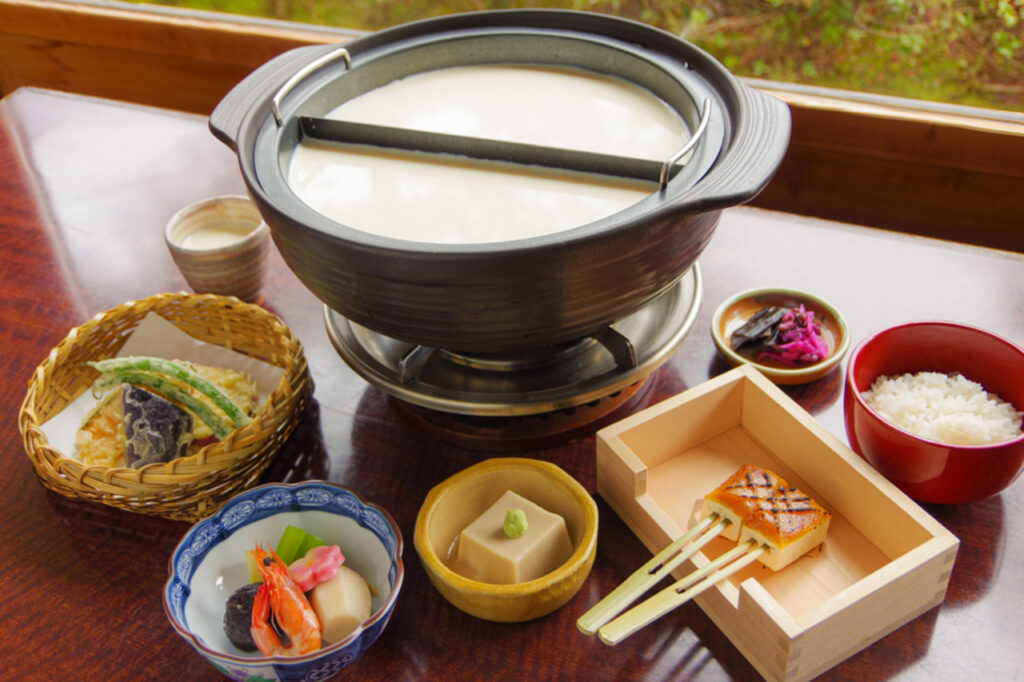
Hana Course: 3,630 yen. You can choose between yuba (bean curd) and yudofu (tofu) for the main course. Dishes using seasonal ingredients vary depending on the season. It is a pleasure to enjoy the changes each time you visit!

[Kodaiji Hashiba is located in the middle of the Ne-no-michi path connecting Kiyomizu-dera Temple and Maruyama Park. It is a rare ryotei where yuba cuisine can be enjoyed on the premises of Kodaiji Temple, one of Kyoto's most popular sightseeing spots associated with Hideyoshi Hashiba. The most noteworthy dish is the homemade raw yuba dish, which is made with an abundance of yuba. In addition to the yuba rice with melt-in-your-mouth yuba, which is known for its smooth yuba filling, you should definitely order the yuba gratin, where you can enjoy the harmony of yuba and white sauce. Enjoy traditional yuba cuisine in the historic Kodaiji Temple.
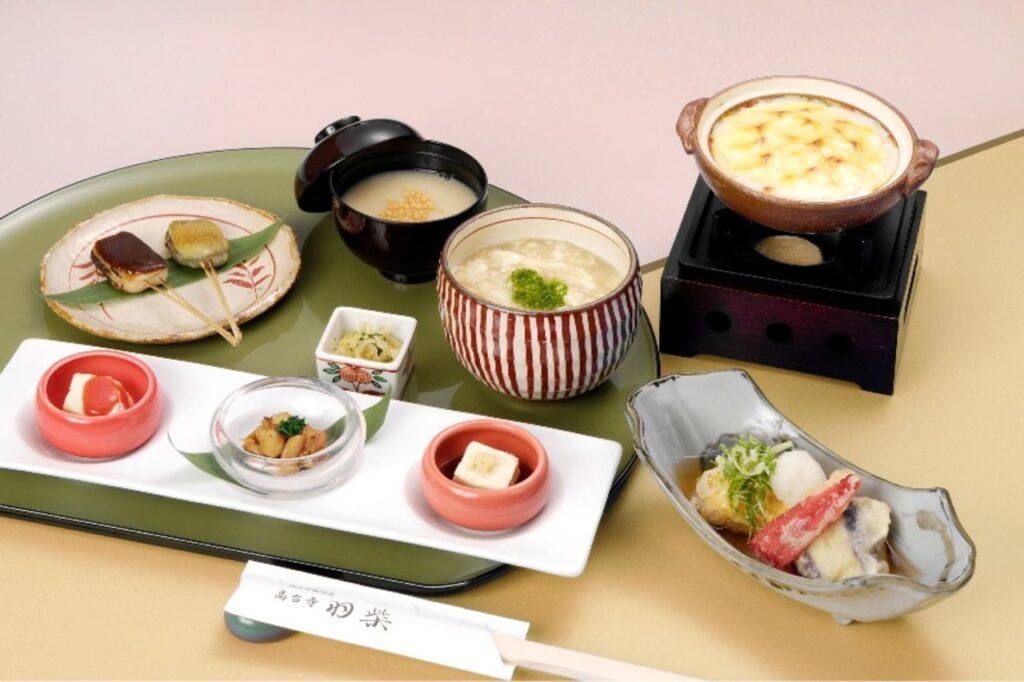
Kyo-yuba set menu: 2,860 yen. The famous yuba gratin is a perfect fusion of traditional yuba and Western cuisine.

Hanbei Bran" has been supporting the bran culture in Kyoto for more than 300 years since its establishment. The roots of Chabo Hanbei originated from the idea of "introducing how to use bran so that it can be easily enjoyed at home" when it was used mainly in vegetarian dishes and ryotei (traditional Japanese restaurants). Their signature dish is Mushiyoi, which is made with their specialty bran and yuba (dried bean curd). The name comes from the Kyoto dialect meaning "a light meal to nourish the stomach," but the variety and volume of the menu is surprisingly large, despite its elegance. Enjoy the mushiyoi of kyo bran and yuba in the restaurant, which makes use of a Kyoto townhouse and a retro-modern Western-style building, while feeling the history of the area.
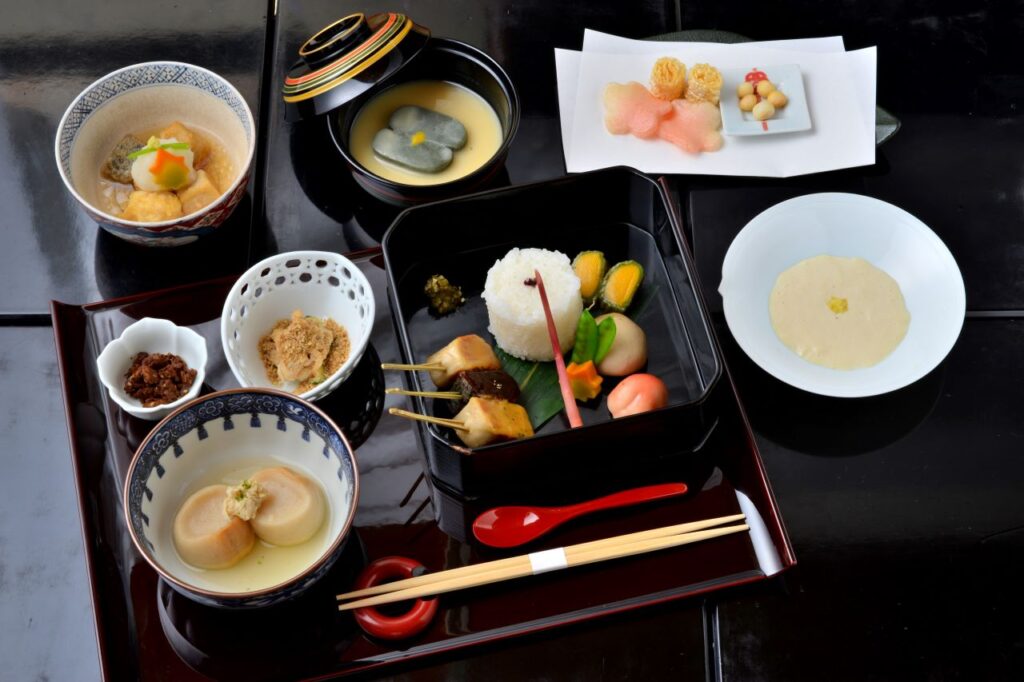
Mushiyaki: 4,400 yen. A wide variety of dishes that make the most of the deliciousness of fu and yuba are lined up in a narrow space. The modest size is easy to carry in the mouth.

Over 600 interviews per year! An order site carefully selected by the editors who knows Kyoto and Shiga.
nowOfficial LINE friend registration500 yen OFF coupon is being issued!
Distributed every Friday morning at 8:00 am! From new restaurant information to event information that we want to share with you, We deliver articles about Kyoto that are useful to know. About 20,000 people have registered.Click here to add a friend!
 News
News Feature article
Feature article Featured event
Featured event